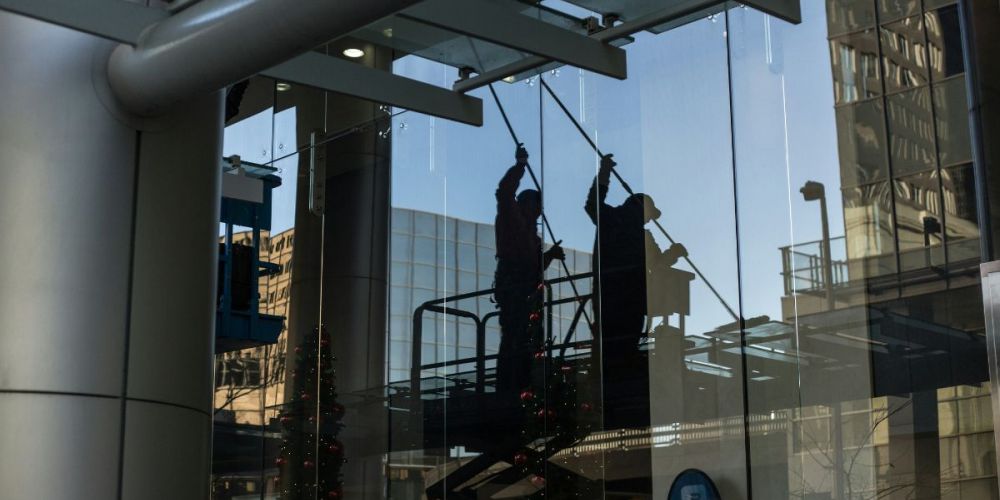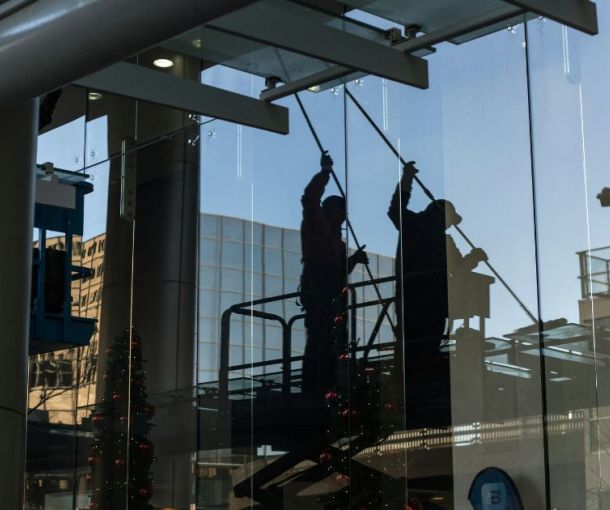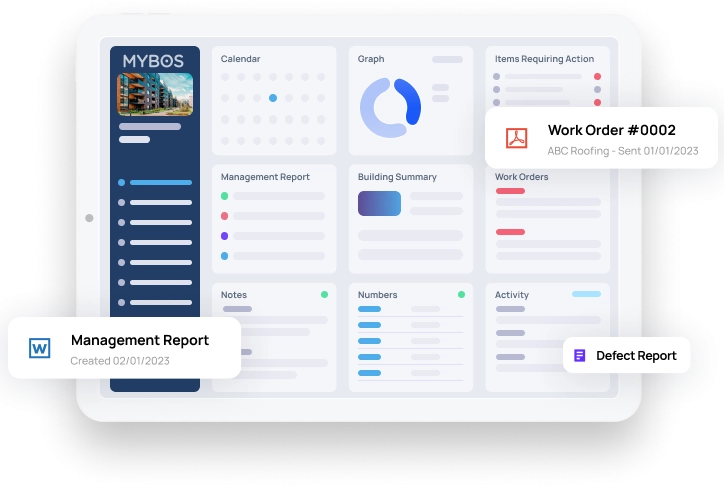
Predictive Works Forecasting: Planning and Budgeting Tips for Long-Term Building Health
Predictive works forecasting, when paired with effective maintenance planning and long-term asset management, empowers building and facility managers to stay ahead of the curve. It shifts the mindset from a reactive “fix it when it breaks” approach to a proactive strategy that prevents issues before they occur. This enables more accurate budgeting, clearer maintenance timelines, and a smarter, more strategic approach to building management.
As operational costs rise and compliance demands grow, the pressure on property and facility managers continues to increase. Rather than reacting to unexpected failures or overspending on short-term fixes, predictive planning helps teams take control—mapping out maintenance needs in advance, allocating resources efficiently, and making informed decisions that enhance building performance and extend asset life cycles.
Whether you’re managing a single site or a diverse property portfolio, mastering predictive works forecasting is essential for achieving efficient, sustainable, and forward-thinking building management.
What Is Predictive Maintenance Planning?
Predictive maintenance planning leverages data, analytics, and historical performance to anticipate equipment or infrastructure failures before they happen. By identifying issues early, this approach reduces downtime, lowers repair costs, and enables more proactive, informed decision-making.
Unlike traditional preventative maintenance—which follows fixed schedules—predictive strategies use real-time monitoring, asset condition reports, and performance trends. This allows building managers to schedule maintenance based on actual need rather than arbitrary timelines, leading to more efficient asset management and longer building lifecycles.
Predictive maintenance is especially valuable in strata maintenance planning and commercial property budgeting, where accuracy and consistency are essential. It supports uninterrupted service delivery, helping maintain tenant satisfaction and financial stability across properties.
To learn more about how predictive maintenance compares with other approaches, read our guide on The Three Main Types of Maintenance Strategies.
Why Long-Term Building Health Requires Better Forecasting
Long-term asset planning goes beyond maintaining appearances—it’s about maximising performance, managing risk, and preserving property value over time. Predictive building maintenance forecasting plays a key role by helping to:
- Prevent costly emergencies and minimise unplanned downtime
- Deliver data-driven insights to guide capital works planning
- Align infrastructure strategies with long-term lifecycle goals
- Inform preventative maintenance budgets using real, actionable data
By integrating regular building health assessments and structured maintenance schedules into your operations, you gain clearer visibility into future needs. This proactive approach supports smarter decision-making, reduces reactive costs, and strengthens overall asset performance.
Deloitte highlights the shift from scheduled to predictive maintenance across asset-intensive industries. Their research shows that integrating IoT sensors, analytics, and AI allows organizations to anticipate equipment failures, optimise workforce allocation, and reduce maintenance costs providing a clear roadmap for smarter, data-driven facility management.
Key Benefits of Predictive Works Forecasting
Whether you’re managing a high-rise residential complex or a multi-use commercial building, implementing predictive forecasting brings a range of benefits:
- Improved budget control through accurate facilities budgeting tips
- Extended asset lifespan through timely, condition-based interventions
- Reduced risk of system failure and associated reputational damage
- Better compliance with safety and operational standards
- Increased tenant satisfaction from uninterrupted amenities and services
Cushman & Wakefield emphasizes that integrating IoT sensors, energy systems, and predictive maintenance tools enables facilities managers to make data-driven decisions. This shows that such systems can forecast equipment deterioration before failures occur, helping to reduce downtime, extend equipment life, and streamline operations across portfolios.
Tips for Effective Building Maintenance Forecasting
Proactive maintenance forecasting is essential for reducing unexpected costs, extending asset life, and maintaining occupant satisfaction. Here are five key tips to improve your approach:
- Conduct a Building Health Assessment
Start by evaluating the current condition of your assets. This should include mechanical, structural, electrical, and fire safety systems.
- Implement Asset Condition Reporting Tools
Use smart platforms like MYBOS to centralise and digitise asset performance tracking.
- Prioritise Based on Risk and Cost
Rank assets by criticality, failure risk, and replacement cost to ensure you allocate budget efficiently.
- Develop Long-Term Maintenance Schedules
Create a rolling forecast covering the next 5-10 years, outlining expected maintenance, upgrades, or replacements.
- Engage With Experts
Work with reliable contractors and maintenance specialists.
Collaborating with qualified professionals is key to executing your plan effectively. For tips on choosing the right service providers, check out our article on Top Questions to Ask Before Hiring a Facility Maintenance Contractor.
Preventative vs Predictive: A Balanced Building Management Strategy
Preventative maintenance is still essential for routine servicing and compliance. However, predictive forecasting refines this approach by adding precision. The combination of both ensures:
- Fewer surprises: By identifying potential issues before they become critical, you can reduce the likelihood of unexpected breakdowns and costly emergency repairs.
- More accurate resource allocation: Predictive insights help you allocate time, staff, and budget where they’re truly needed, rather than spreading resources thin across routine schedules.
- Balanced short- and long-term planning: Preventative maintenance keeps day-to-day operations running smoothly, while predictive planning supports long-term asset performance and capital forecasting.
By integrating both preventative and predictive methods, building managers can stay ahead of issues while keeping budgets and performance on track. Learn how to implement a strong preventative maintenance plan in our guide on How to Successfully Manage Preventative Maintenance in Your Building.
How MYBOS Supports Predictive Maintenance Planning
MYBOS offers a centralised platform designed to streamline both predictive and preventative maintenance workflows. Built specifically for building and facility managers, it reduces manual processes, improves oversight, and ensures nothing falls through the cracks.
From detailed asset tracking and performance reporting to automated reminders and secure document storage, MYBOS supports:
- Asset condition reporting – Monitor asset health in real time with digital condition logs and performance trend analysis.
- Long-term maintenance schedules – Build rolling forecasts to plan major repairs, upgrades, and replacements well in advance.
- Building and facility budgeting support – Leverage data-driven insights to create more accurate, efficient, and strategic maintenance budgets.
The system also incorporates insights into the pros and cons of in-house versus outsourced maintenance, helping you select the most cost-effective and practical service model for your building’s needs.
Final Thoughts: Future-Proofing Your Building
The buildings of tomorrow start with smarter strategies today. By embracing predictive works forecasting and committing to long-term asset planning, you can keep your facility operational, cost-efficient, and compliant well into the future.
With accurate data, meaningful insights, and the right digital tools, your maintenance approach can evolve from reactive to truly resilient.
Ready to upgrade your building maintenance strategy? Book a demo with MYBOS today and discover how our solutions can future-proof your asset portfolio




